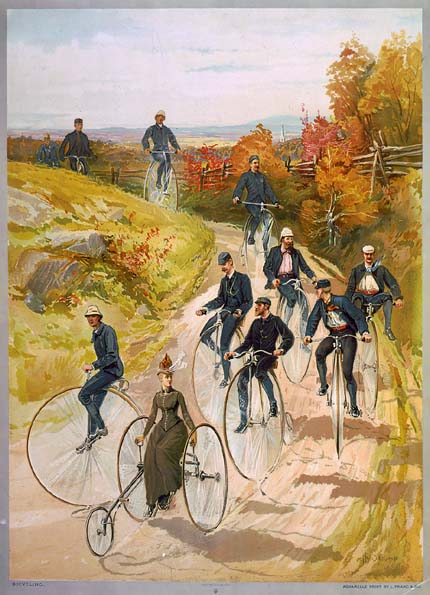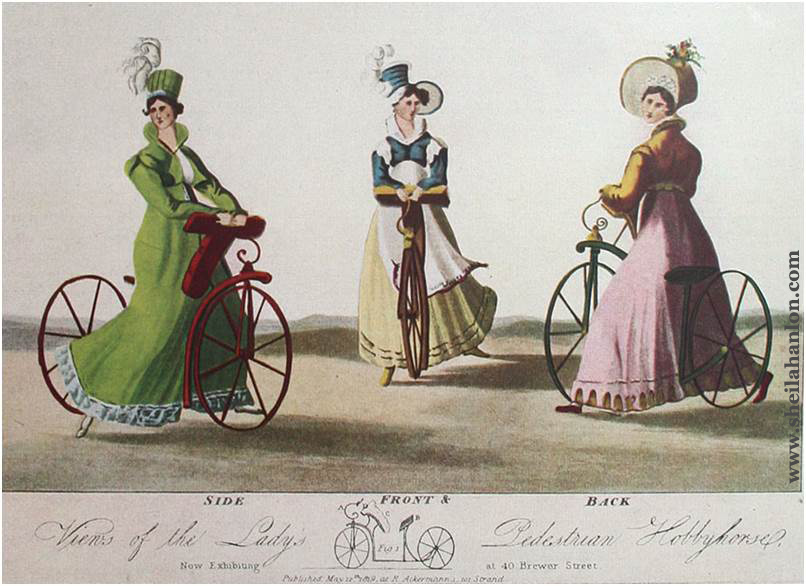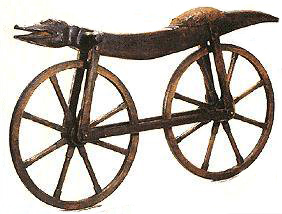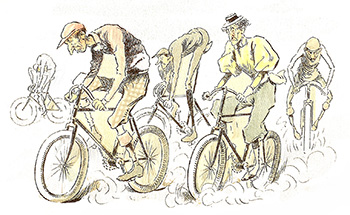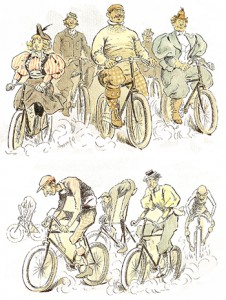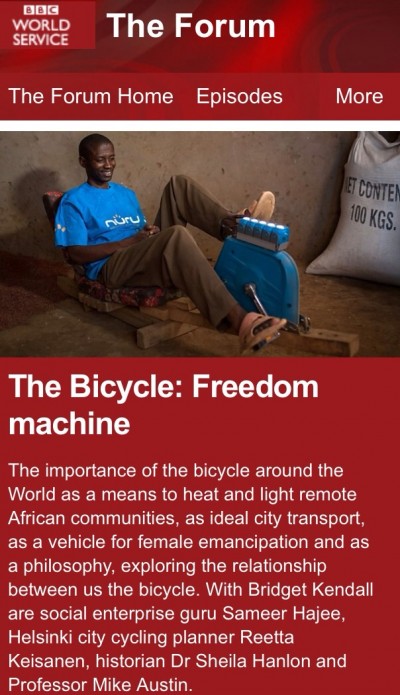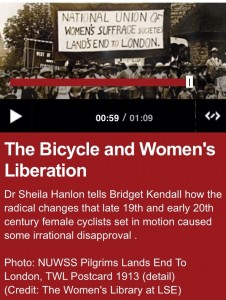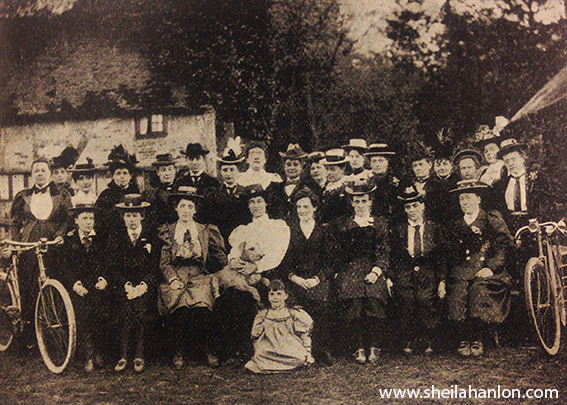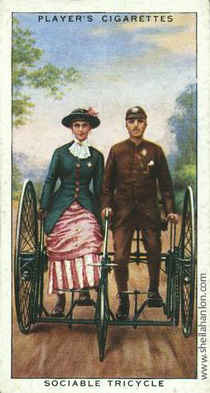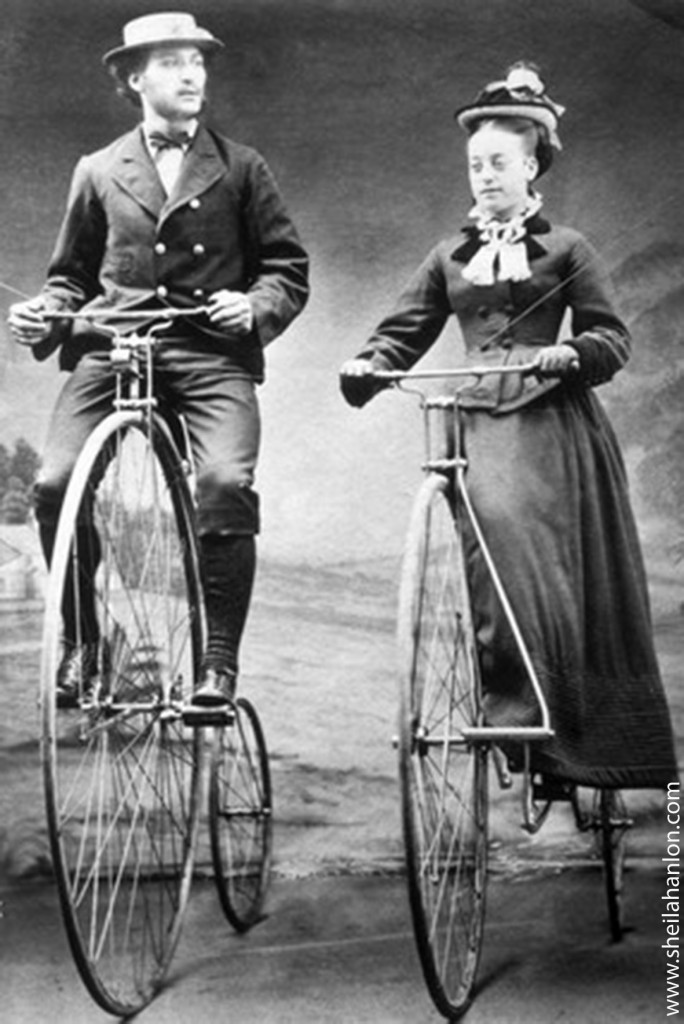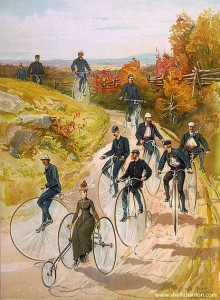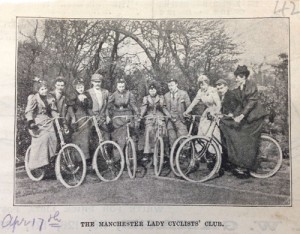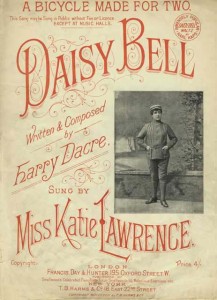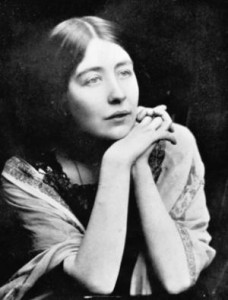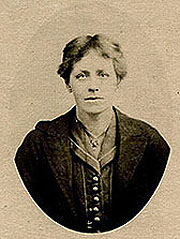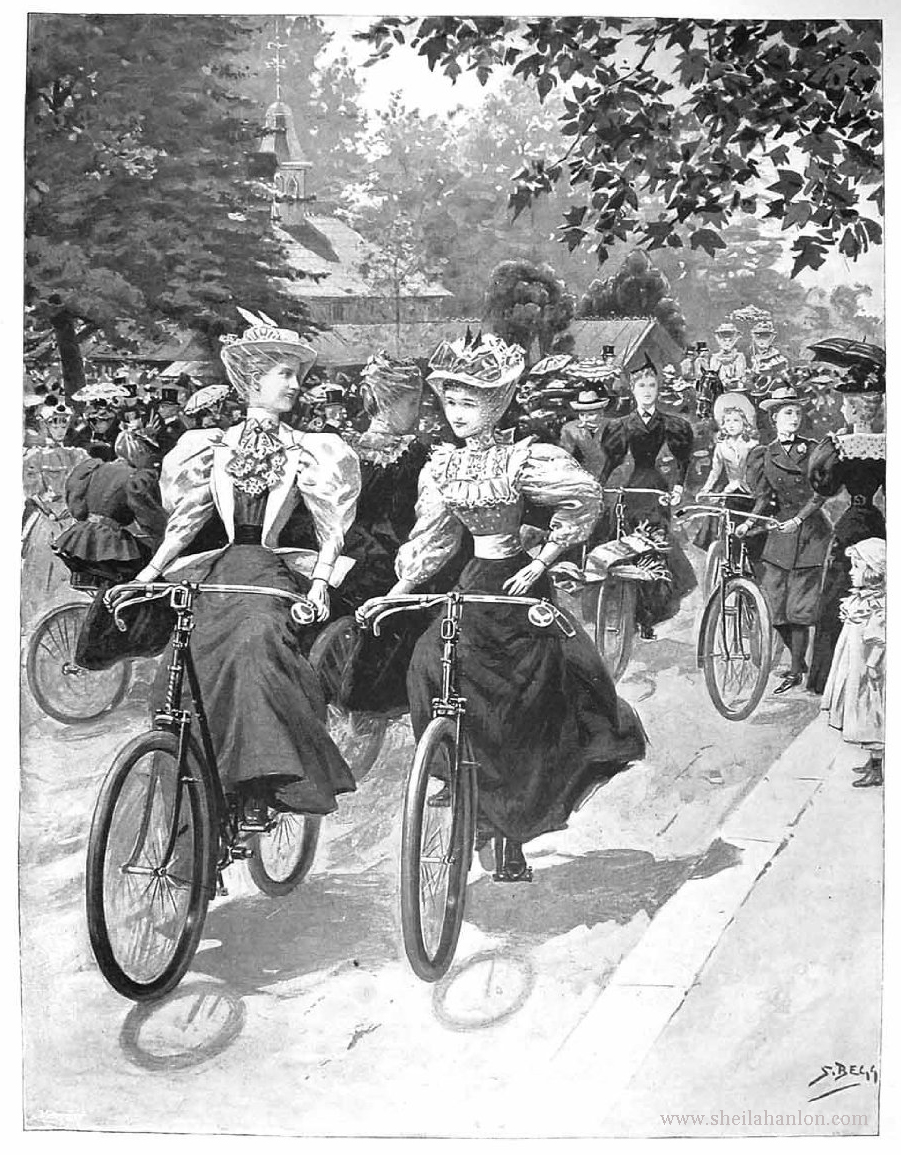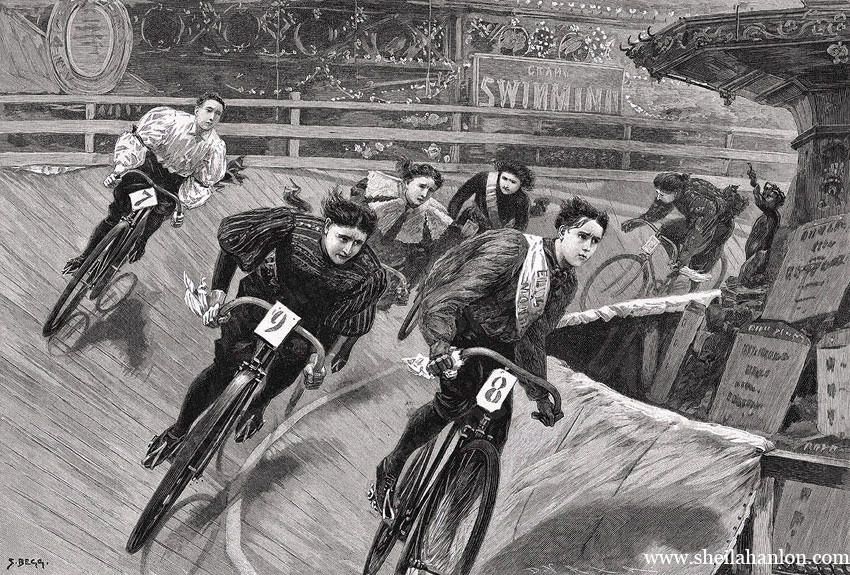The Question of Women’s Dress During the Heyday of Tricycles and Highwheelers, 1870-1880s
The second instalment of the Bicycle Fashion Files examines cycling dress in the age of the tricycle and highwheeler, 1870s-80s. While only a few women took to the pastime in those era, most of whom were wealthy or aristocratic with a handful of circus performers thrown in, the need for adapted dress was recognised. The results ranged from modest riding habits to scandalous gymnastic costumes on stage.
For earlier women’s cycling fashions, see Part One, Early Inventions 1790-1860. Later fashions are covered in Part Three, The 1890s Craze.
Dress Constraints and Conventions in the Golden Age of the Highwheeler
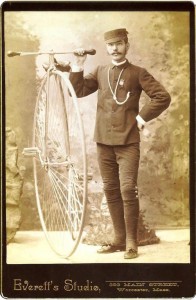 In the 1870s, the machine of choice among fit, young, men of means was the Ordinary, also known as the highwheeler, or penny farthing. Enlarging the front wheel of a velocipede to increase speed resulted in the lofty machine. The masculine traditions, physical demands, danger, and dress associated with high wheeling made the pastime off-limits for most women.
In the 1870s, the machine of choice among fit, young, men of means was the Ordinary, also known as the highwheeler, or penny farthing. Enlarging the front wheel of a velocipede to increase speed resulted in the lofty machine. The masculine traditions, physical demands, danger, and dress associated with high wheeling made the pastime off-limits for most women.
The customary attire for male cyclists was a militarised jacket, tight knee-breeches, and a cap or pith helmets, as reflected in the portraits shown above left. Cycling associations were especially fond of military influenced uniforms.
The riding habit worn by the lady tricyclist leading the pack in Hy Sandham’s painting at the top of this post, for example, would have been incompatible with the highwheelers her companions ride. Conventional women’s dress, and behavioural expectations, were not compatible with highwheeling. Politely straddling the saddle and front wheel in a dress was impossible, not to mention mounting which involved launching yourself onto the machine and the likelihood of a skirt catching dangerously (perhaps fatally) in the front wheel.
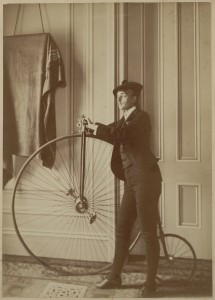 Nonetheless, a handful of women defied convention and tried the machines in borrowed breeches and gymnastic costumes. Shown right is an 1870s self-portrait of American photographer Francis Bernadette Johnson in the get up of a male penny farthing enthusiasts. Little is known about Johnson or her clandestine cycling habits, but one can imagine that if she was travelling at speed down a road on a penny farthing dressed in this costume, she would have been indistinguishable from typical cyclist to most passers-by. Carleton Reid has identified several more similar cases of women riders disguised as men on his website details Roads Were Not Built For Cars.
Nonetheless, a handful of women defied convention and tried the machines in borrowed breeches and gymnastic costumes. Shown right is an 1870s self-portrait of American photographer Francis Bernadette Johnson in the get up of a male penny farthing enthusiasts. Little is known about Johnson or her clandestine cycling habits, but one can imagine that if she was travelling at speed down a road on a penny farthing dressed in this costume, she would have been indistinguishable from typical cyclist to most passers-by. Carleton Reid has identified several more similar cases of women riders disguised as men on his website details Roads Were Not Built For Cars.

